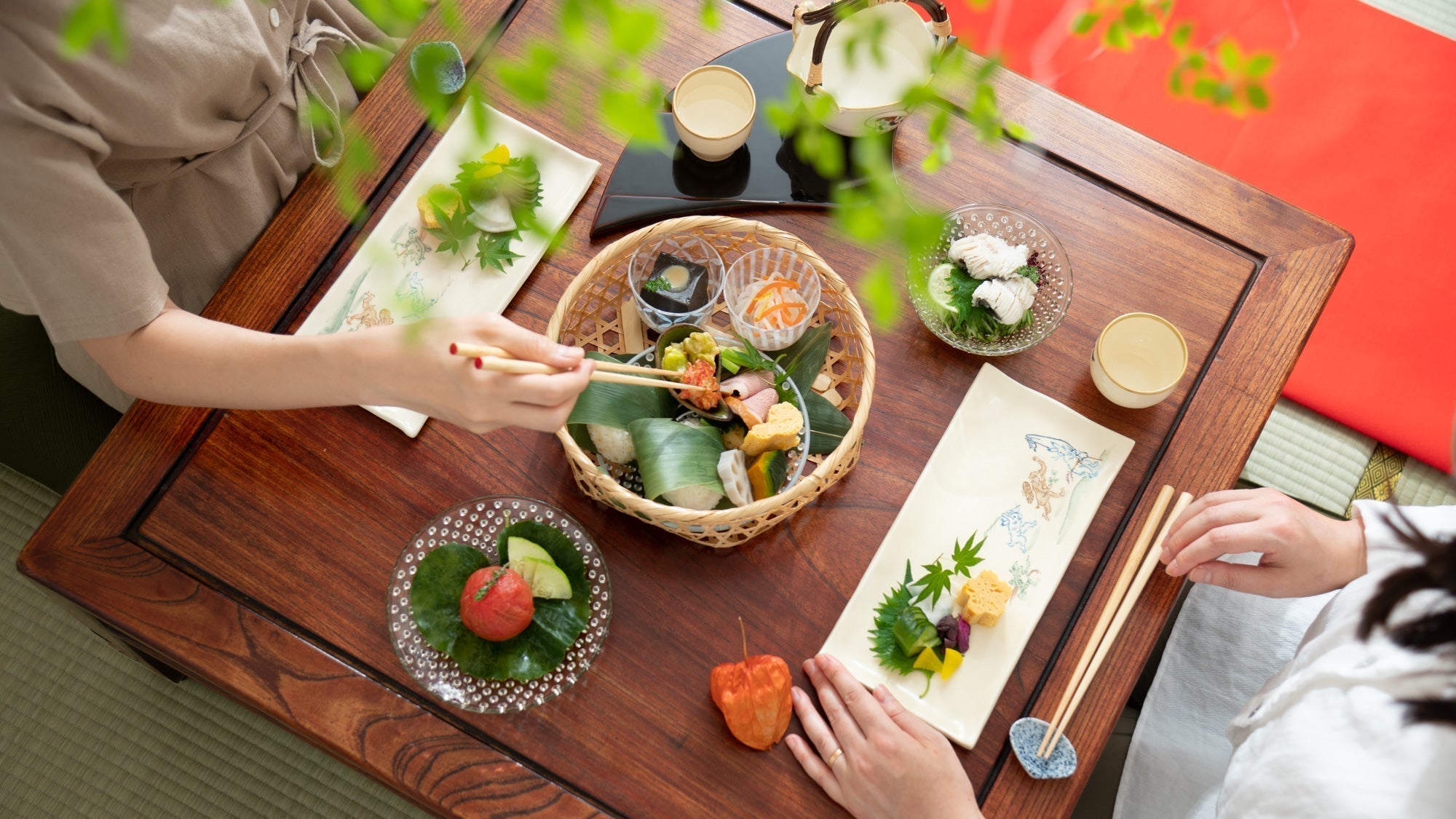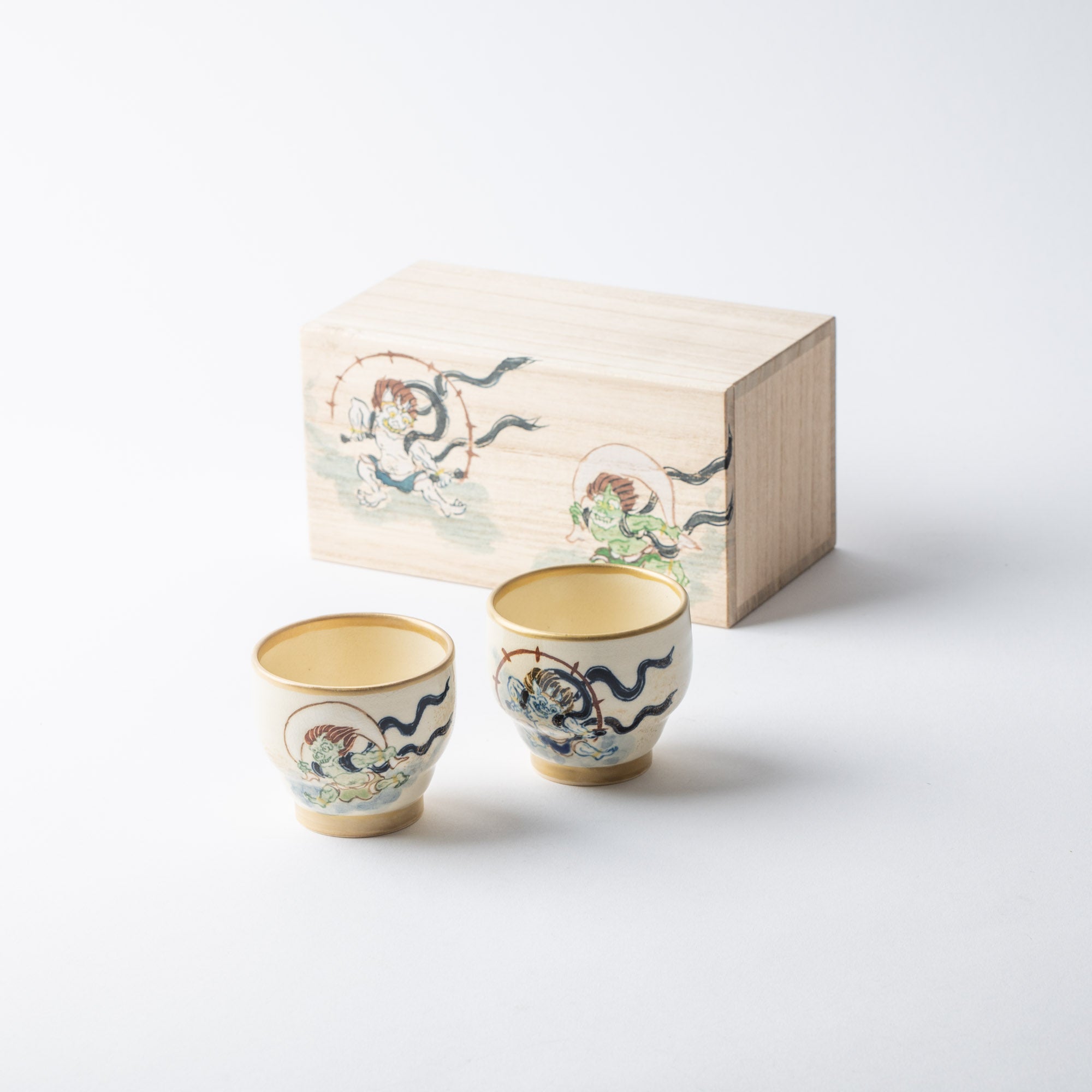
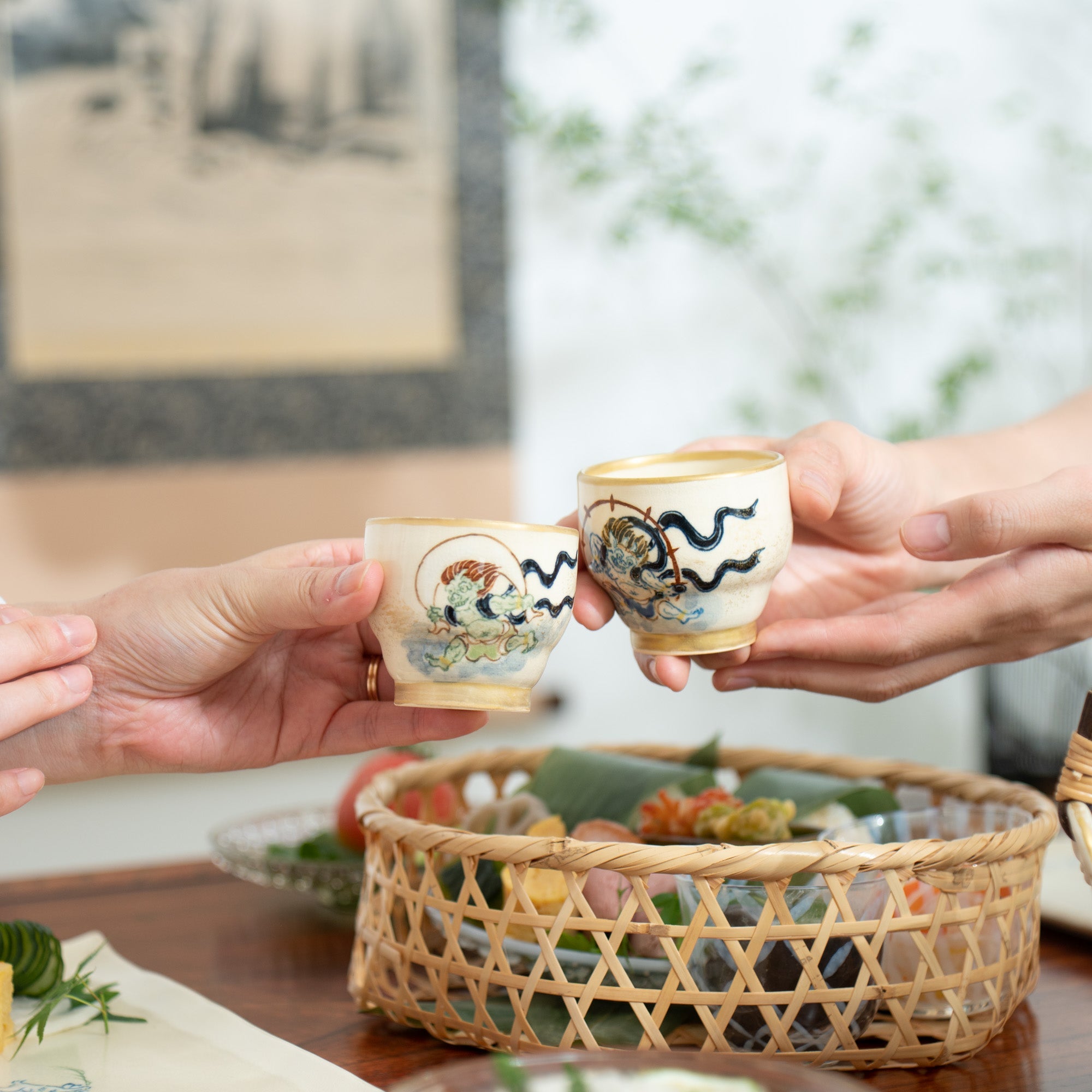

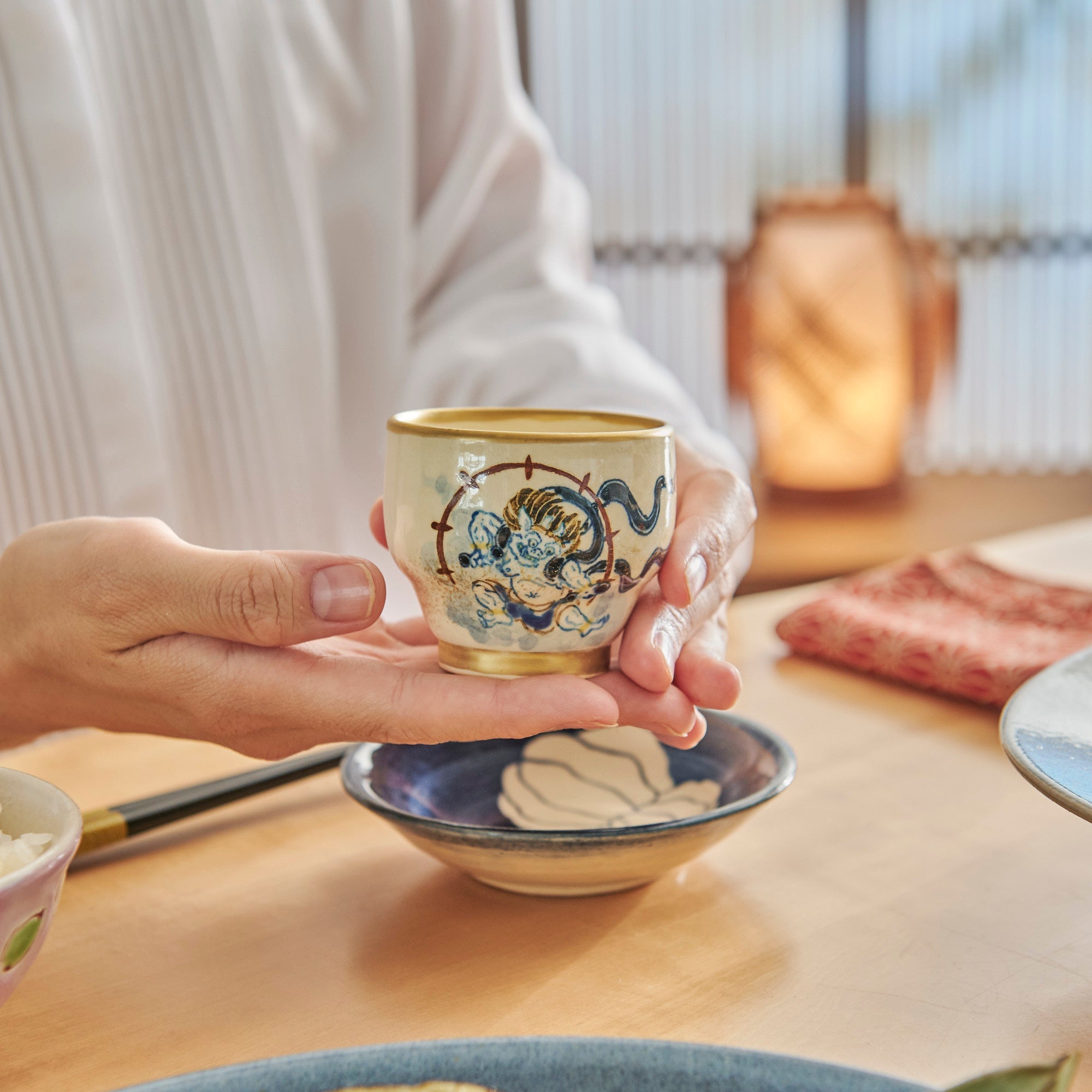
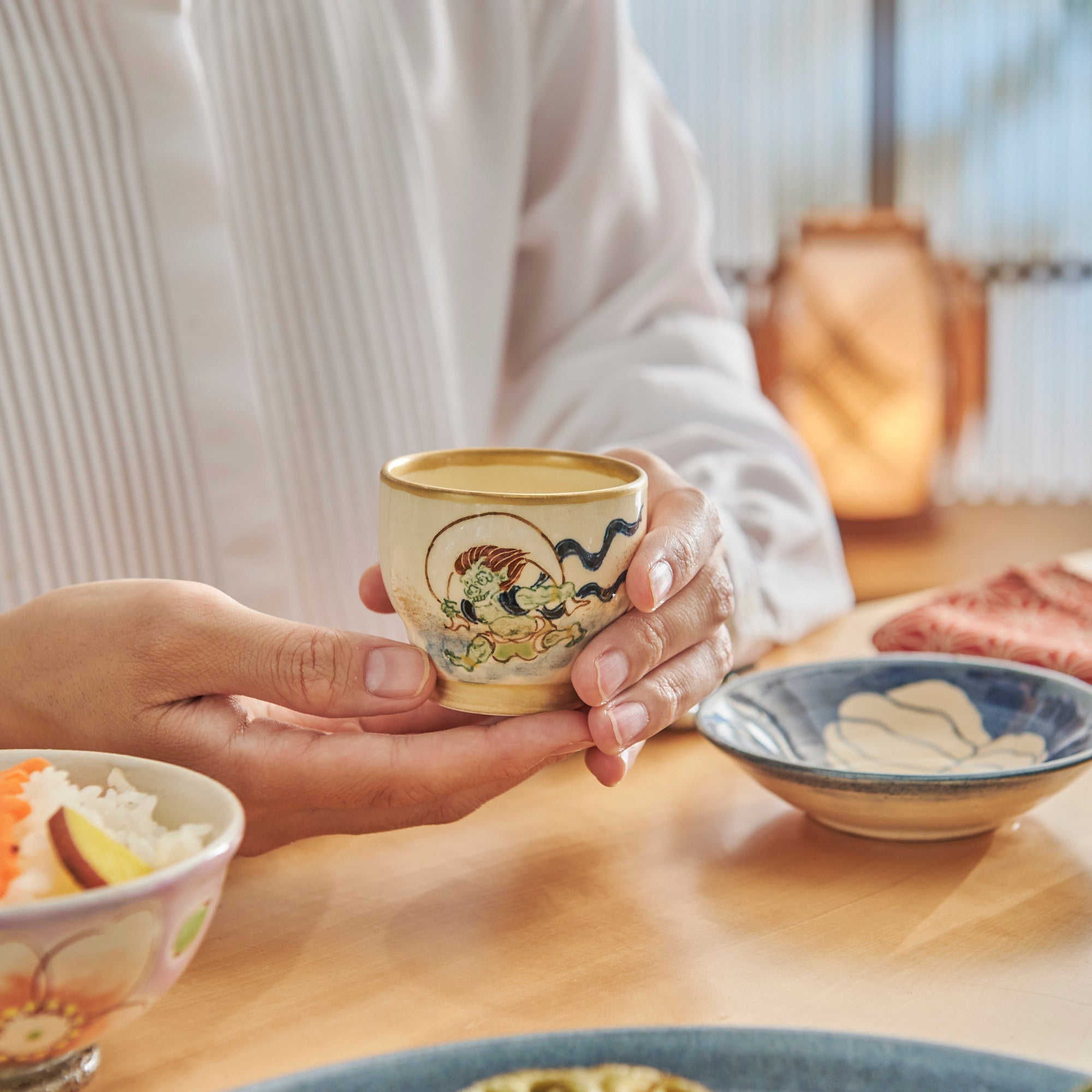
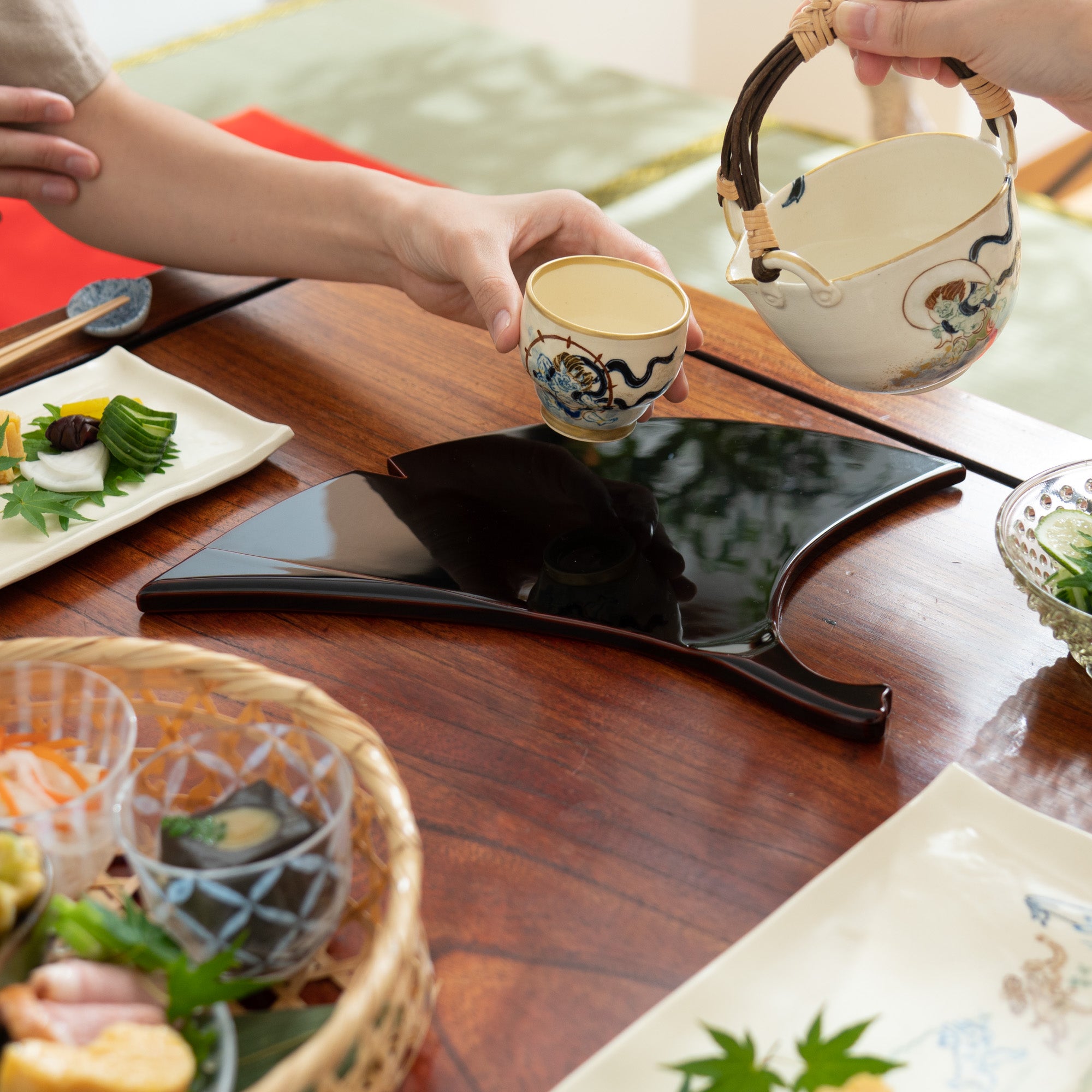
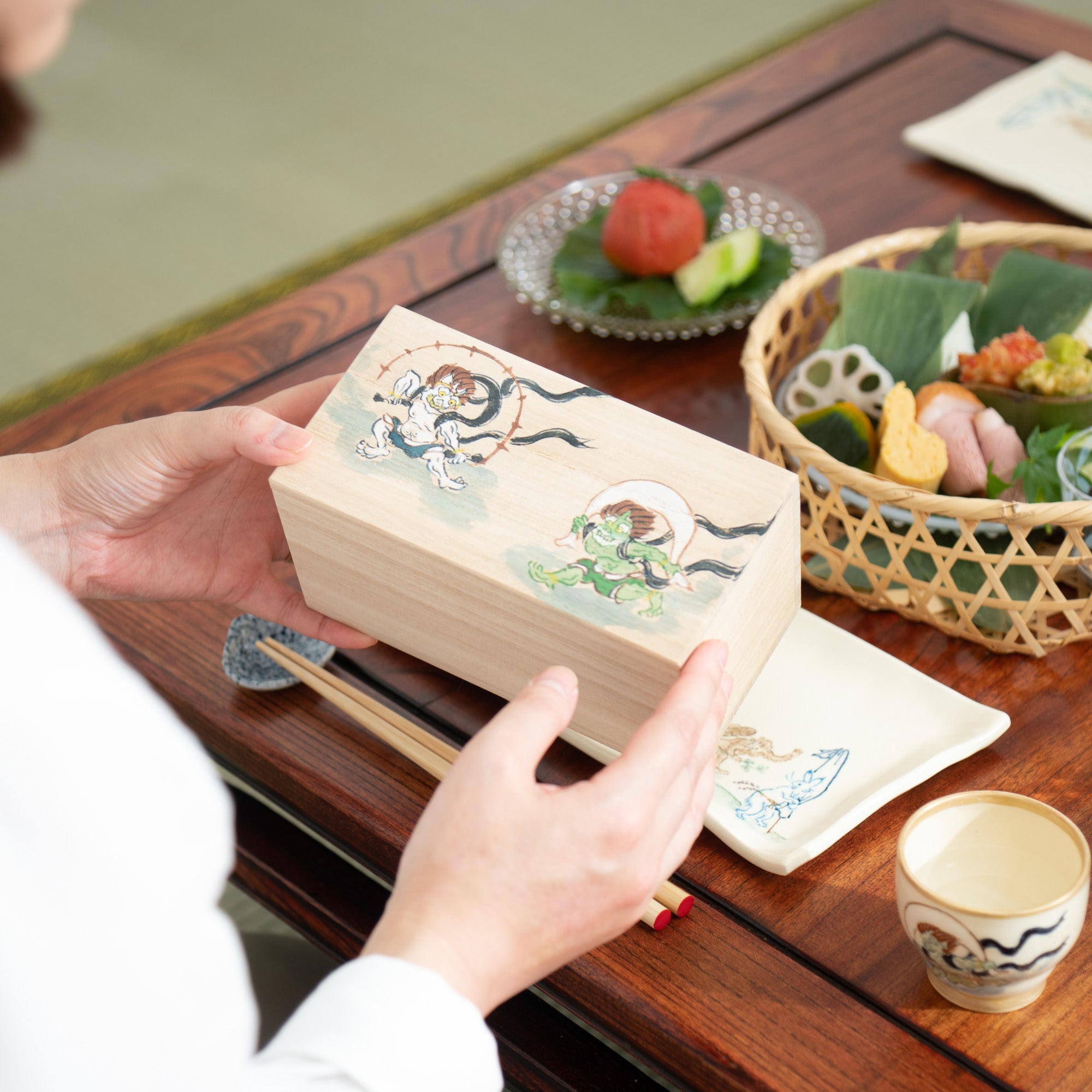
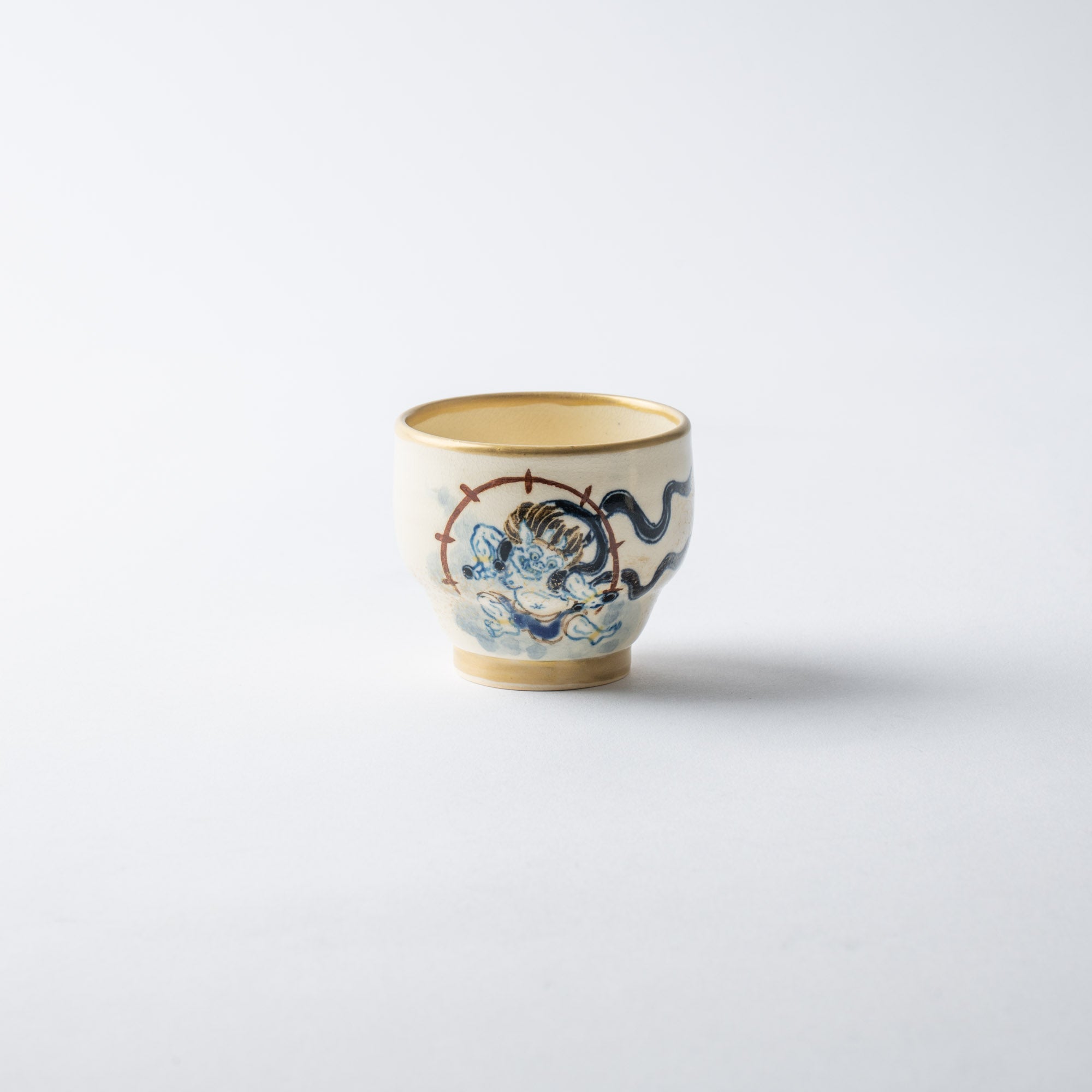
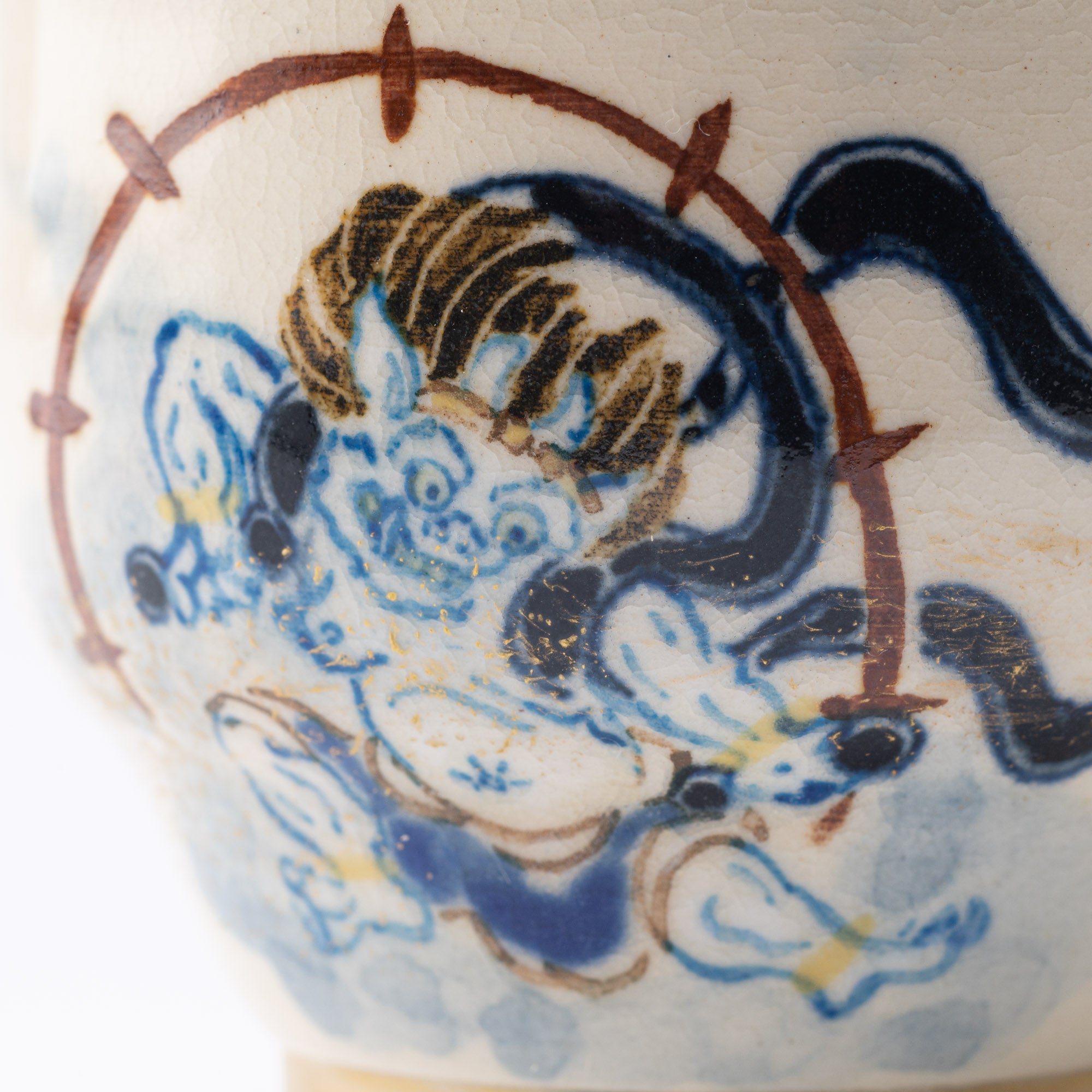
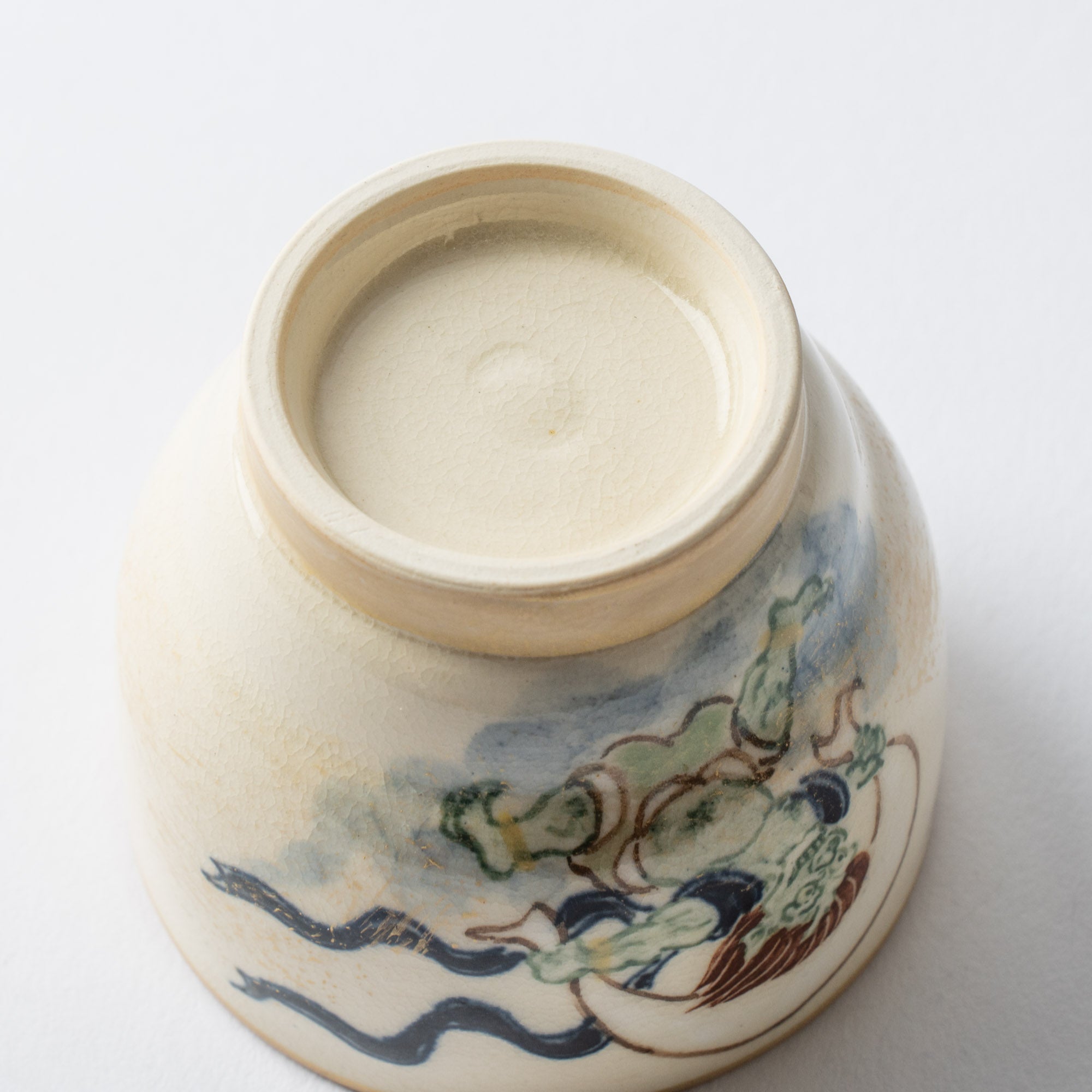

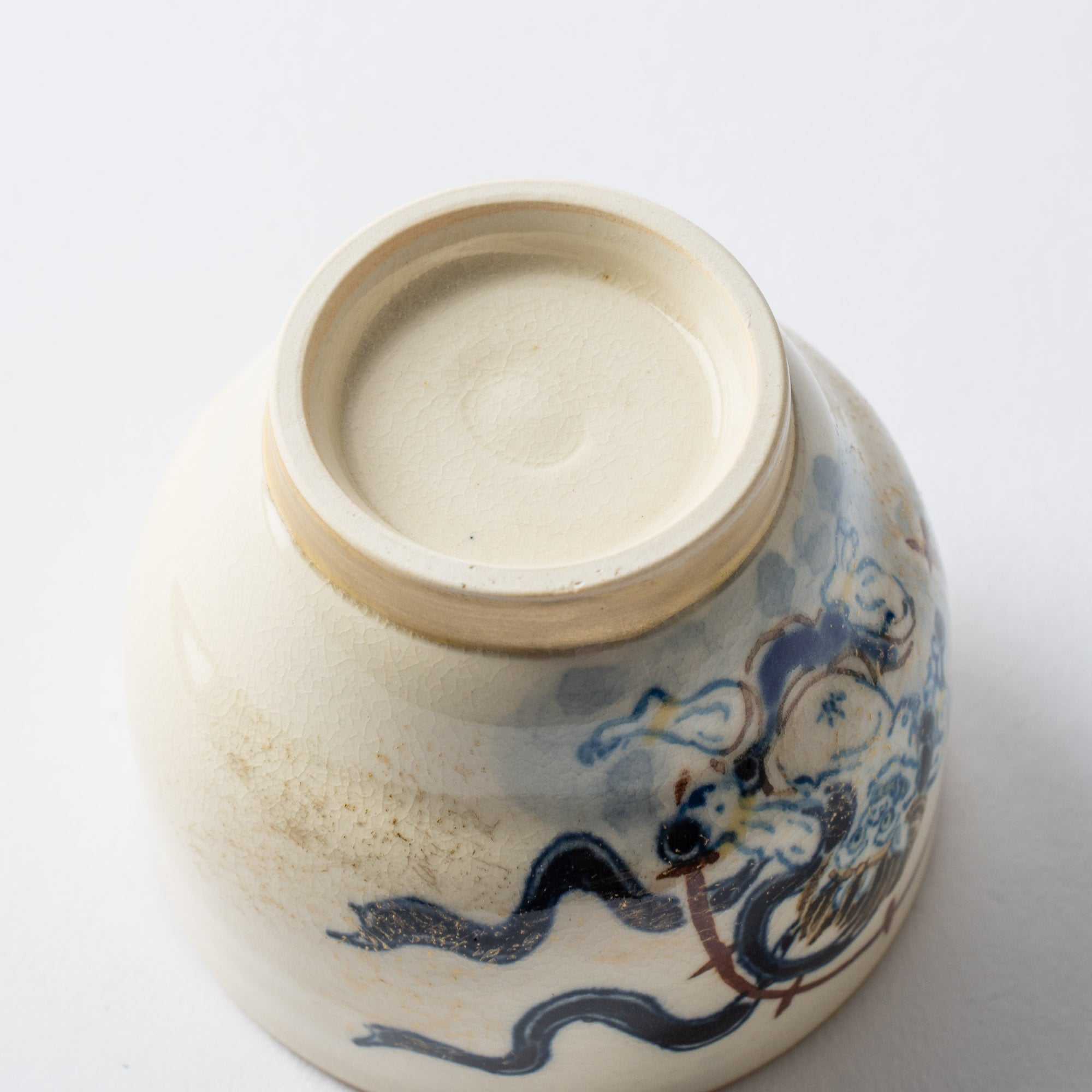
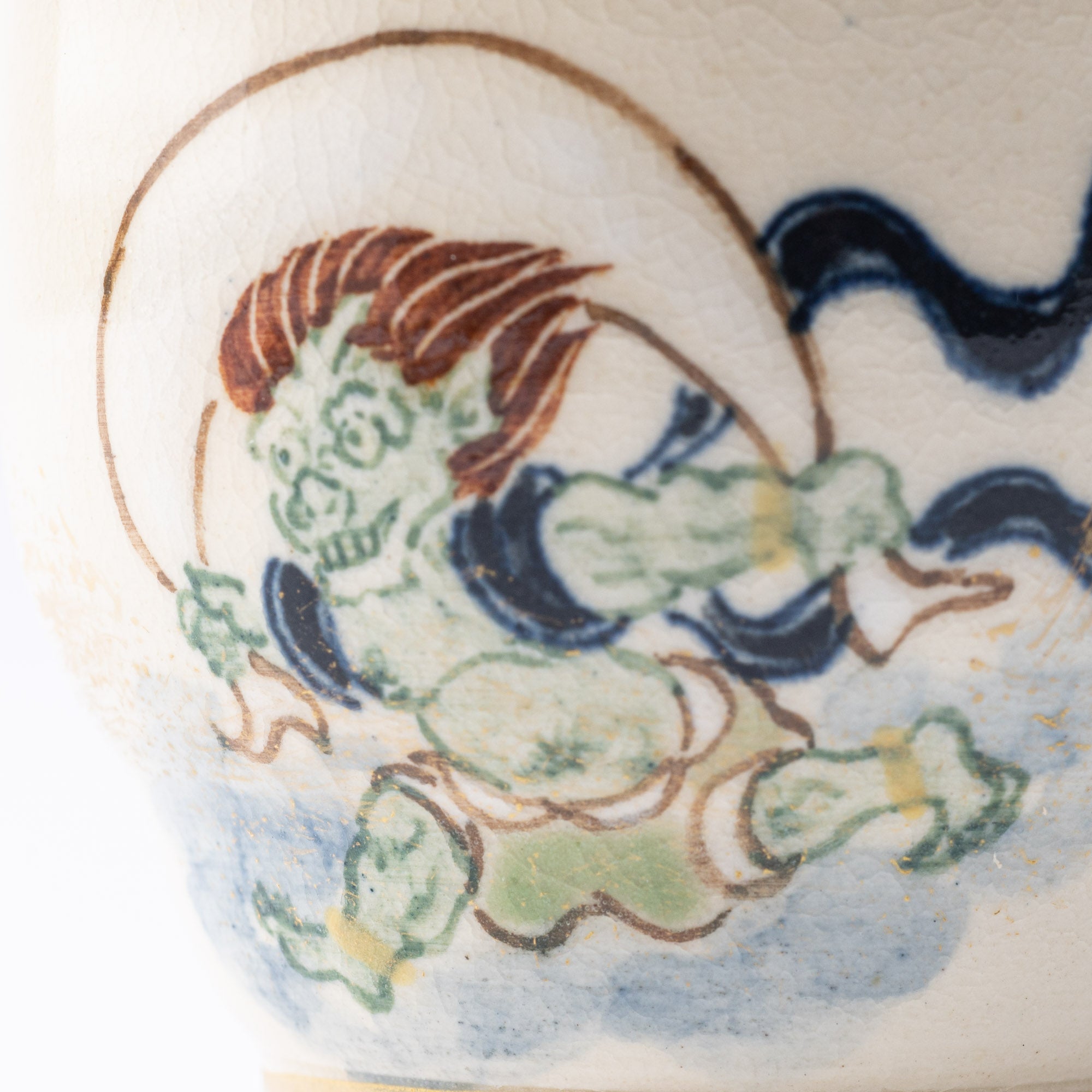
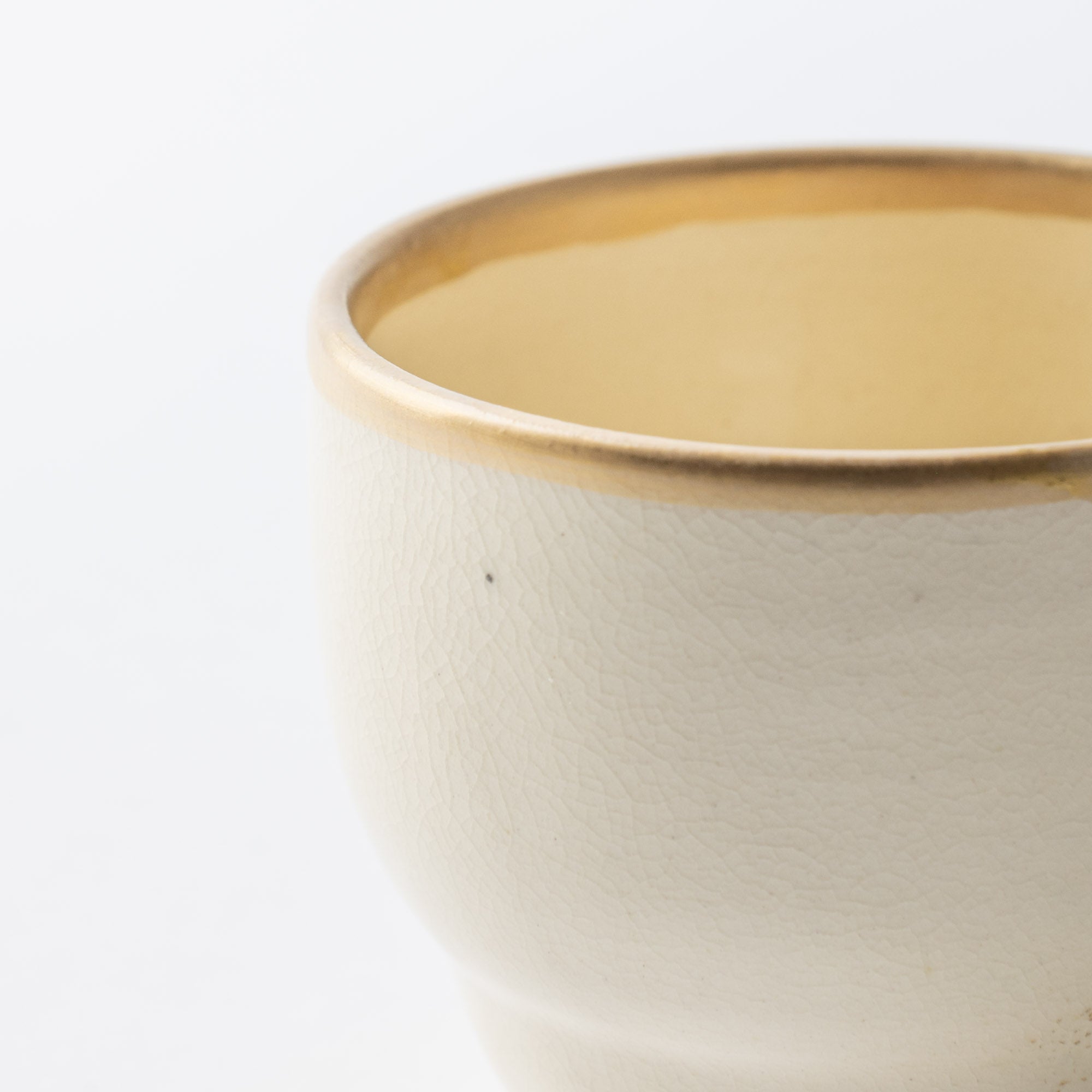
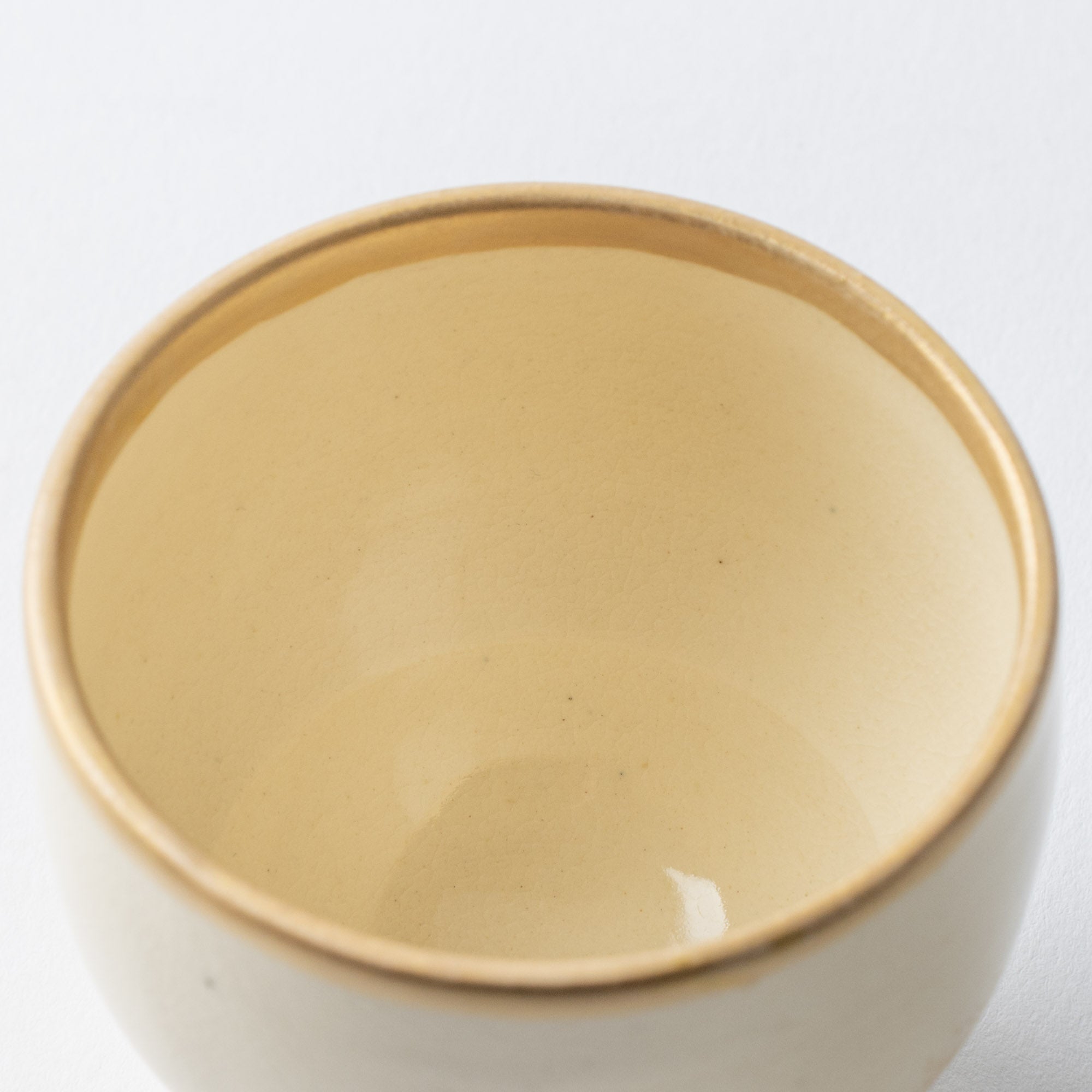
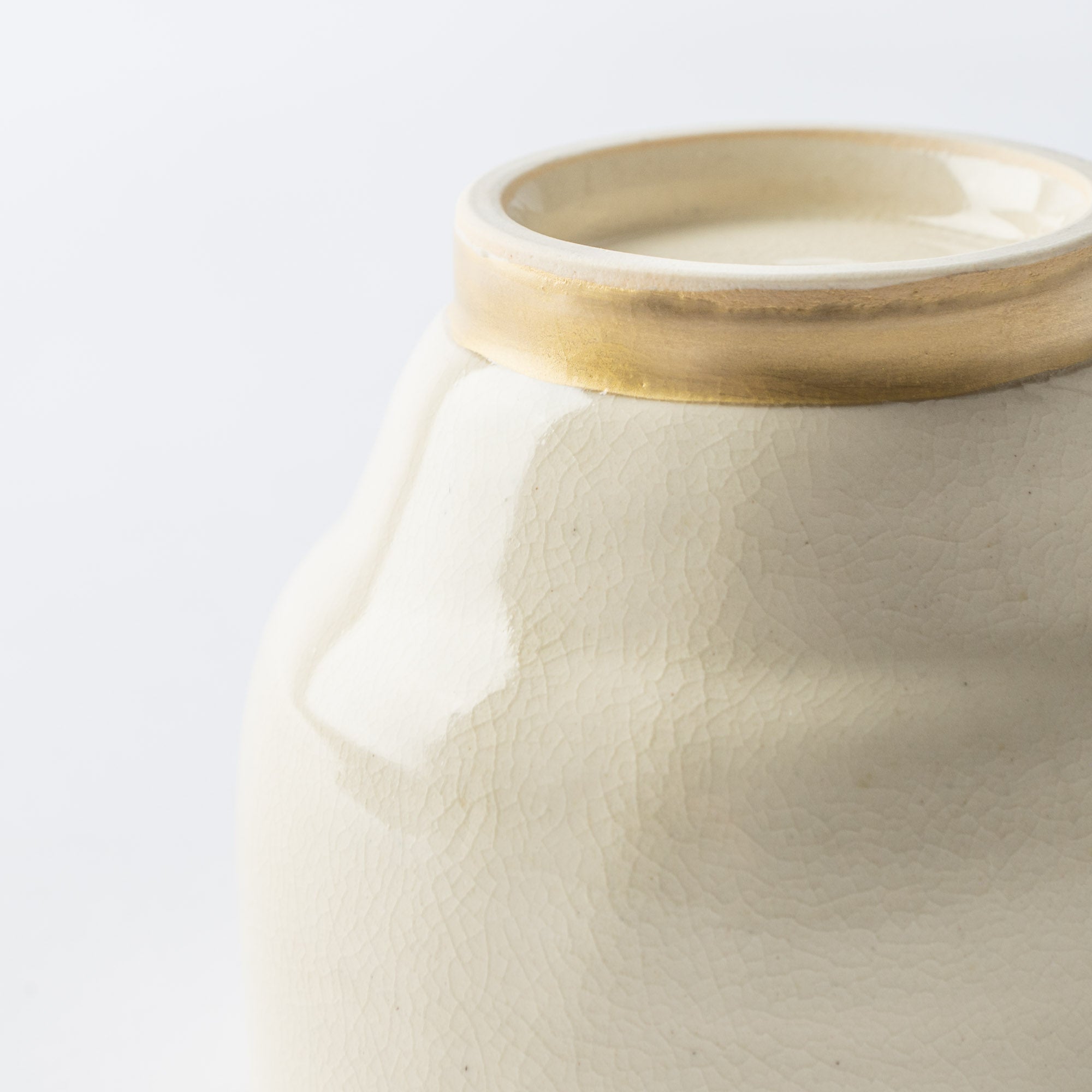
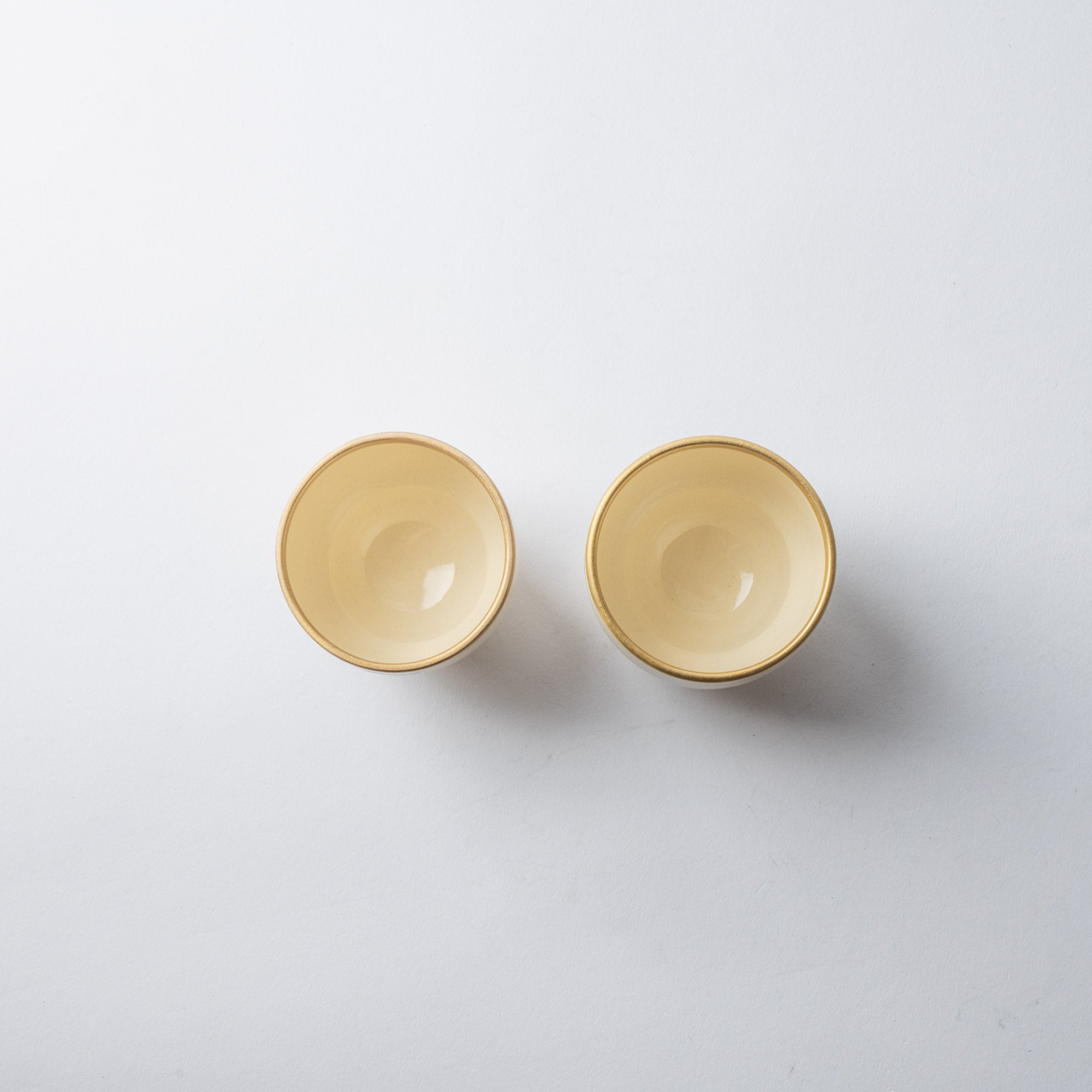
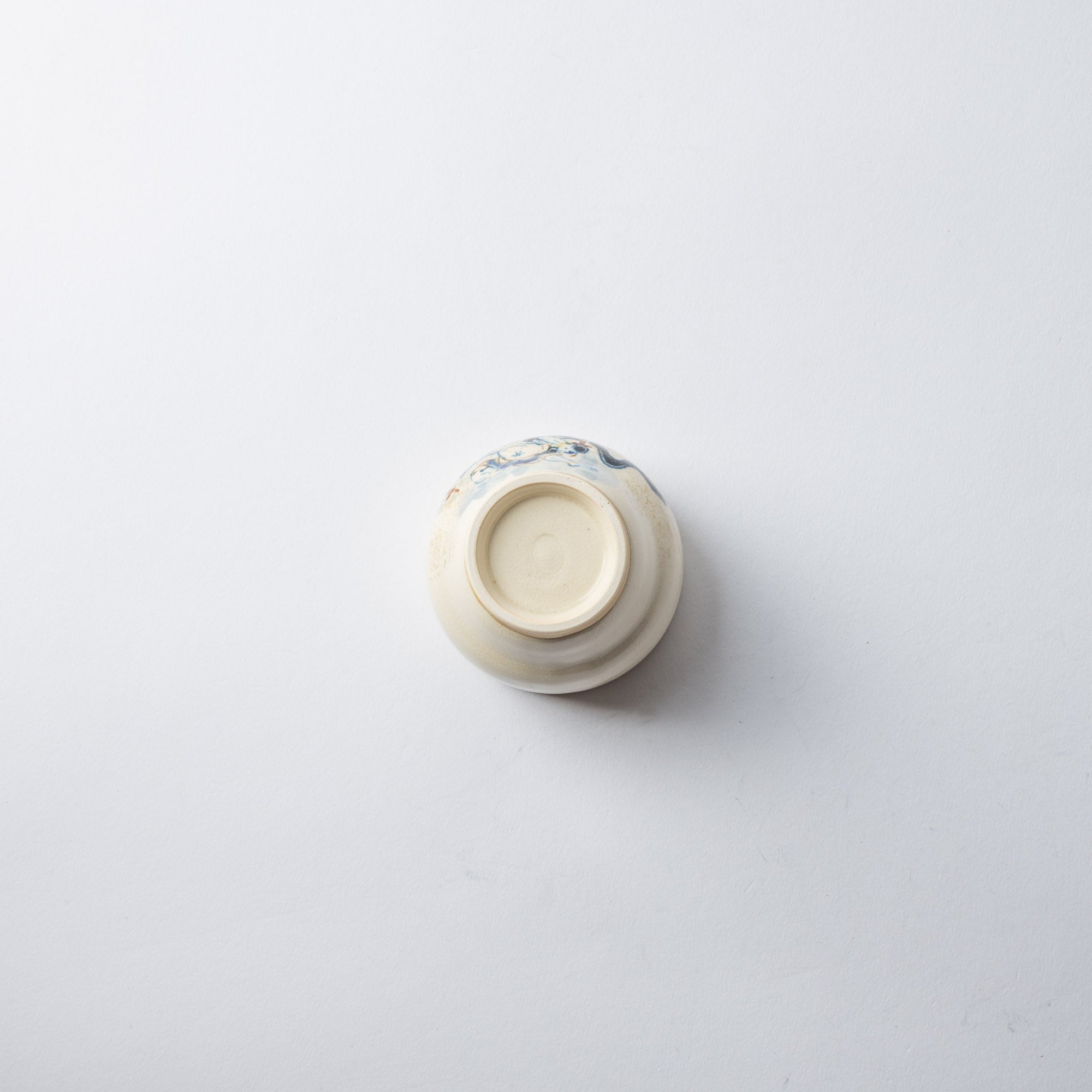
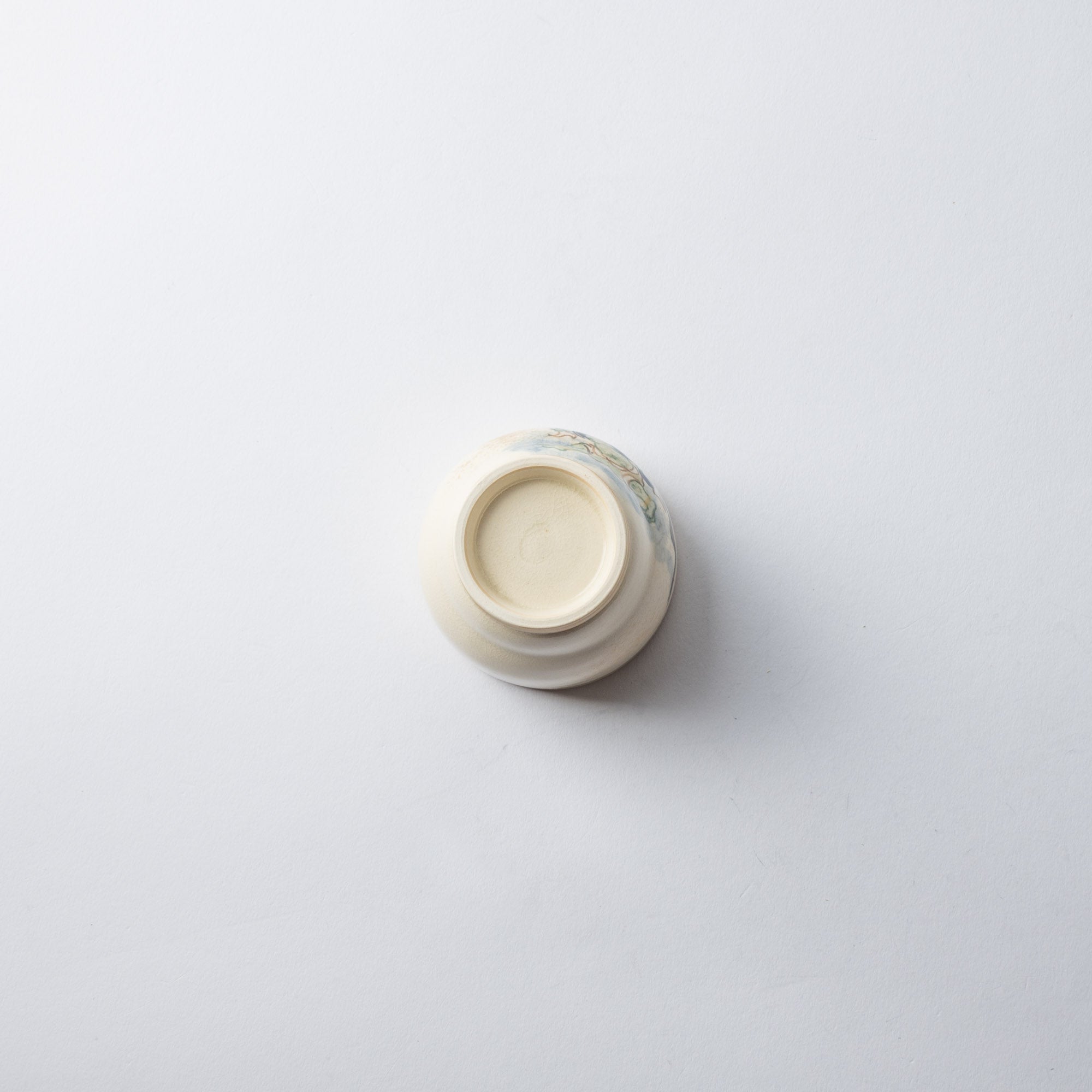
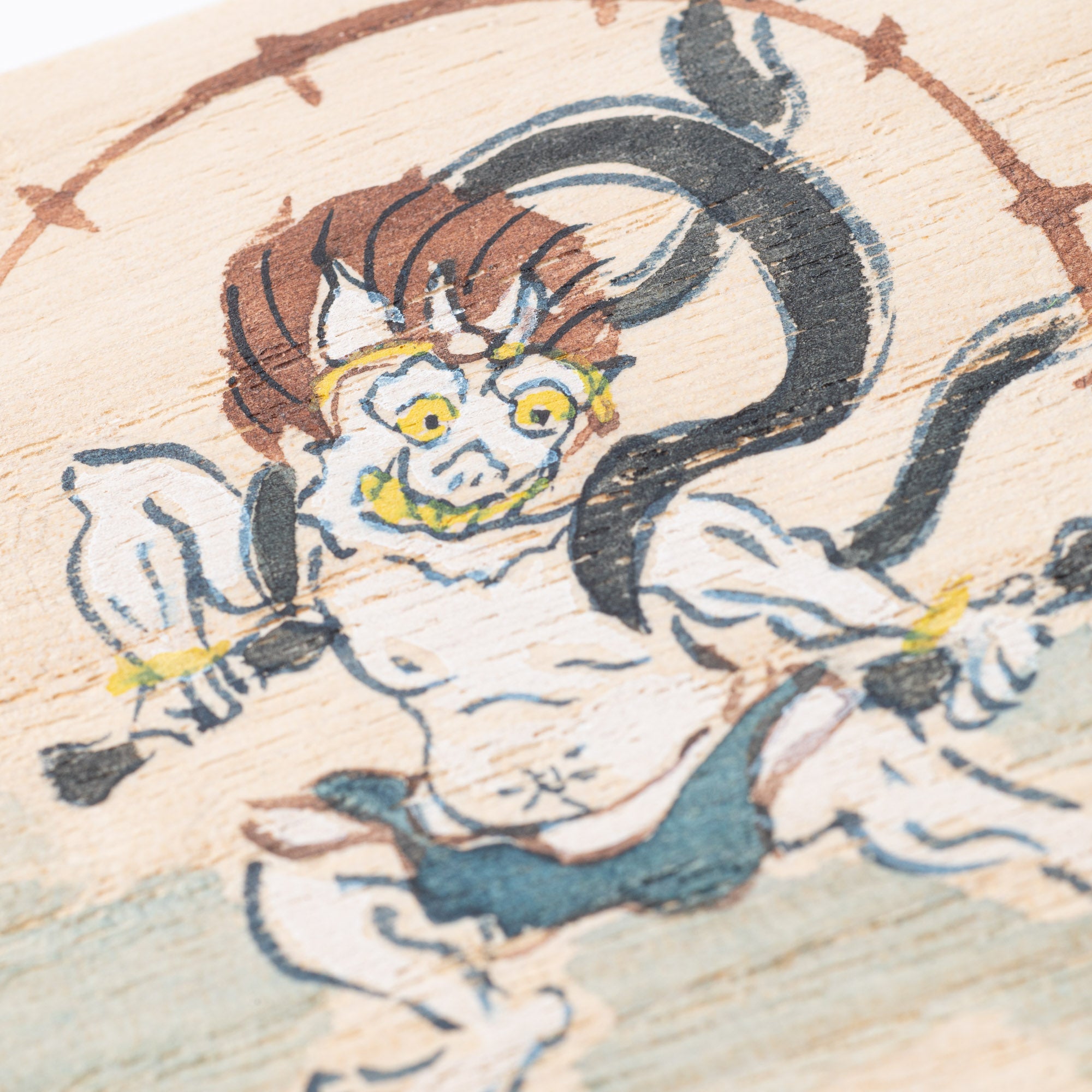

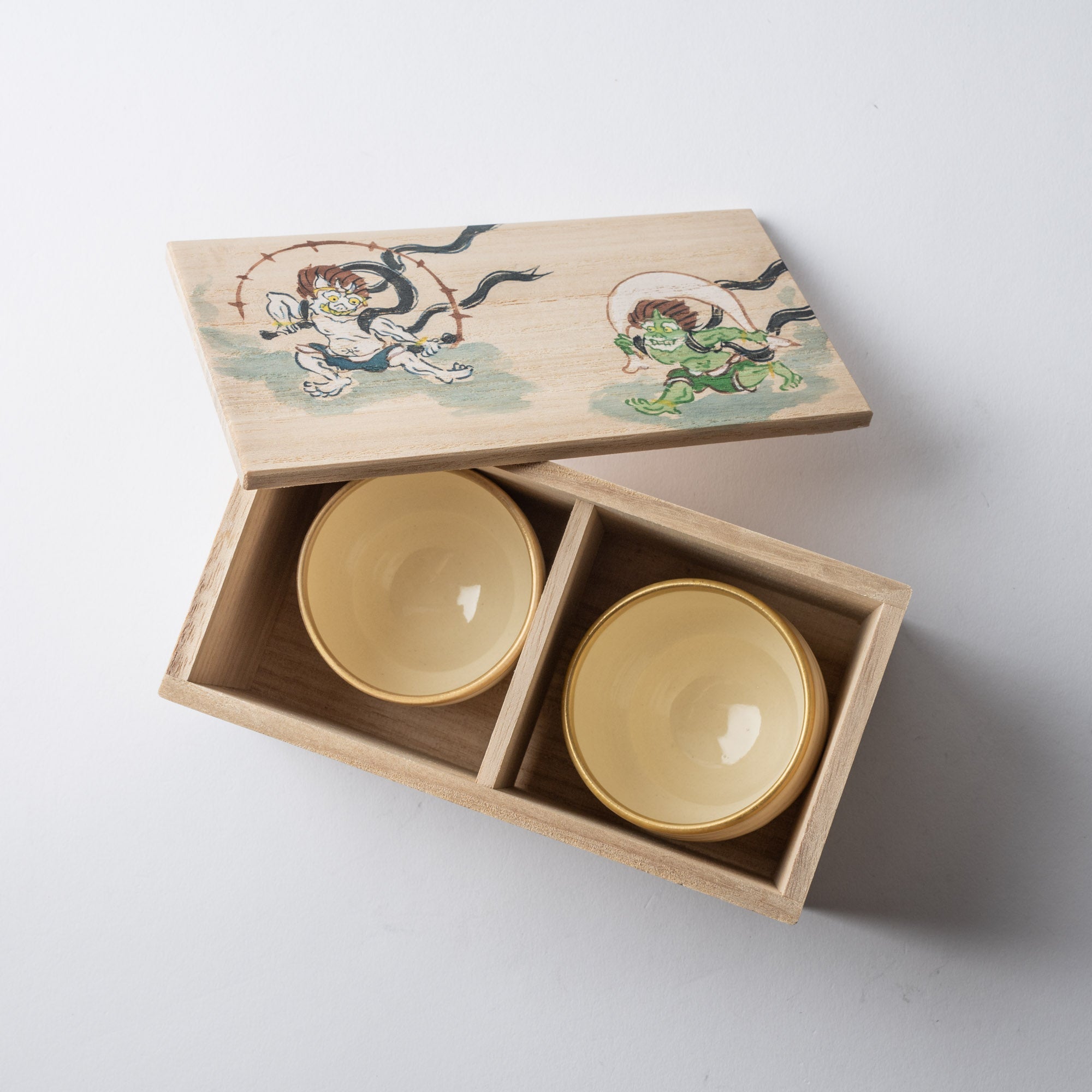
Wind God and Thunder God Sake Cup Pair
Estimated Shipping Widget will be displayed here!
Featuring the distinctive “nami-yu” glaze, which is made from the ashes of the Kyoto forest, this pair of sake cups has a natural base color of yellowish cream-white.
The paintwork is done by individual Japanese-style painters, pursuing their own originality and depth beyond the expectations of a mere decoration. This particular piece presents the deities of "Fujin Raijin" (Wind God and Thunder God). Not only are they deities of the supernatural, but they are also believed to be the attendants of the wise Buddha. The Wind God is riding his cloud, carrying a cloth which lets him control the wind at his own will, and the Thunder God holds a ring of drums.
The technique of painting directly on a bisqued plate requires unique skill as paint is quickly absorbed by the clay surface. The art of underglaze painting uses more restrained colors of blue and brown, giving the piece a more subdued impression.
This item comes with a wooden box made of paulownia tree, making it an ideal gift. The lid depicts a hand painted Wind God and Thunder God, which has its own heart-warming appeal as the dye prospers into the wooden surface.
DETAILS
| Quantity | 2 cups |
| Size |
D 6.5 cm (2.6 in) x H 5.7 cm (2.2 in) [Wooden box] L 16.8 cm (6.6 in) x W 8.2 cm (3.2 in) x H 8.8 cm (3.5 in) |
| Capacity | 60 ml (2.0 fl oz) |
| Material | Stoneware |
| Package Type | Wooden box |
| Microwave | No |
| Dishwasher | No |
Maker / Brand
Tosen Kiln was founded in 1868 as a Kiyomizu ware wholesaler. In 1944, it established a production studio in Mukomachi, a suburb of Kyoto, marking the beginning of full-scale Kiyomizu ware production. Today, the kiln operates in Gojo, Kyoto, continuing its legacy of craftsmanship.
Dedicated to refining its techniques and artistic sensibilities, Tosen Kiln embraces Kyoto’s traditional craftsmanship while adapting it for the modern era. Drawing inspiration from Edo-period master potter Nonomura Ninsei, it preserves his precise lathing techniques and luminous painting styles, blending them with clean lines and warm tones to create pieces that resonate with contemporary aesthetics.
Crafts
Kyo ware and Kiyomizu ware, collectively known as Kyo-yaki or Kiyomizu-yaki, are esteemed crafts from Kyoto. Unlike other pottery styles, they integrate various techniques from across Japan, resulting in unique, handmade pieces. Each item is crafted meticulously, from shaping on the pottery wheel to intricate painting, showcasing exceptional modeling skills and delicate designs.
With a rich history intertwined with traditional Japanese culture, Kyo ware and Kiyomizu ware are celebrated for their refined artistry and elegance. Known for their vibrant and detailed paintings, they were officially recognized as a traditional craft by the Japanese government in 1977. Today, these ceramics are prized for their high artistic quality, embodying both historical craftsmanship and aesthetic sophistication.
Choose options






















Estimated Shipping Widget will be displayed here!
Ochoko
An ochoko is a small sake cup, usually holding a bit more than a sakazuki and accommodating two to three sips. Originally, ochoko sake cups were used as kobachi small bowls for side dishes. However, around the mid-Edo period (1603 CE–1868 CE), they began to be used at sake gatherings, where people would start with a sakazuki and then switch to an ochoko as the evening went on.
Ochoko sake cups come in various materials and shapes. The sake cups included in sake sets are commonly ochoko sake cups.
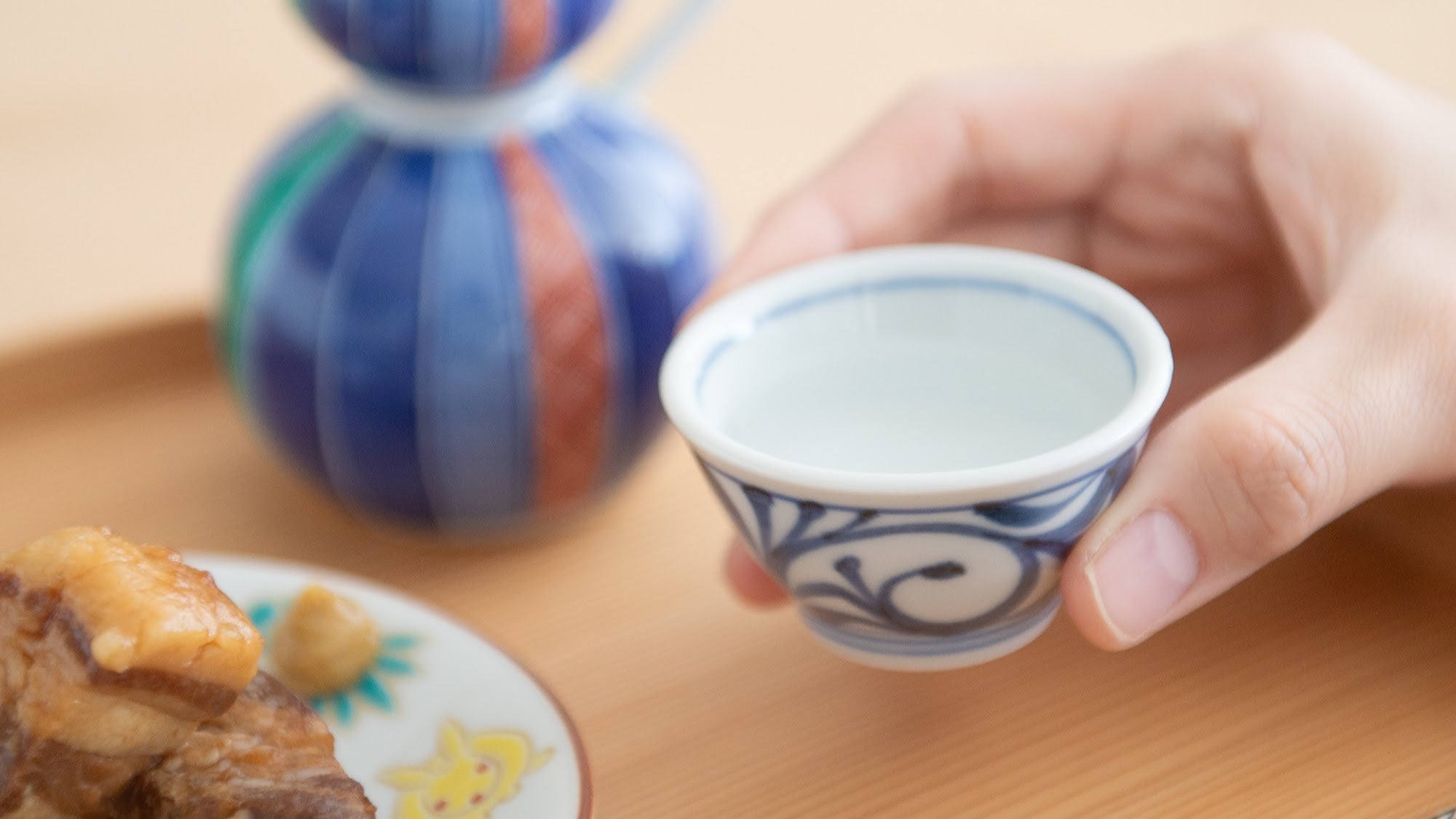
Expert Tips: Guide for Choosing the Perfect Sake Cup
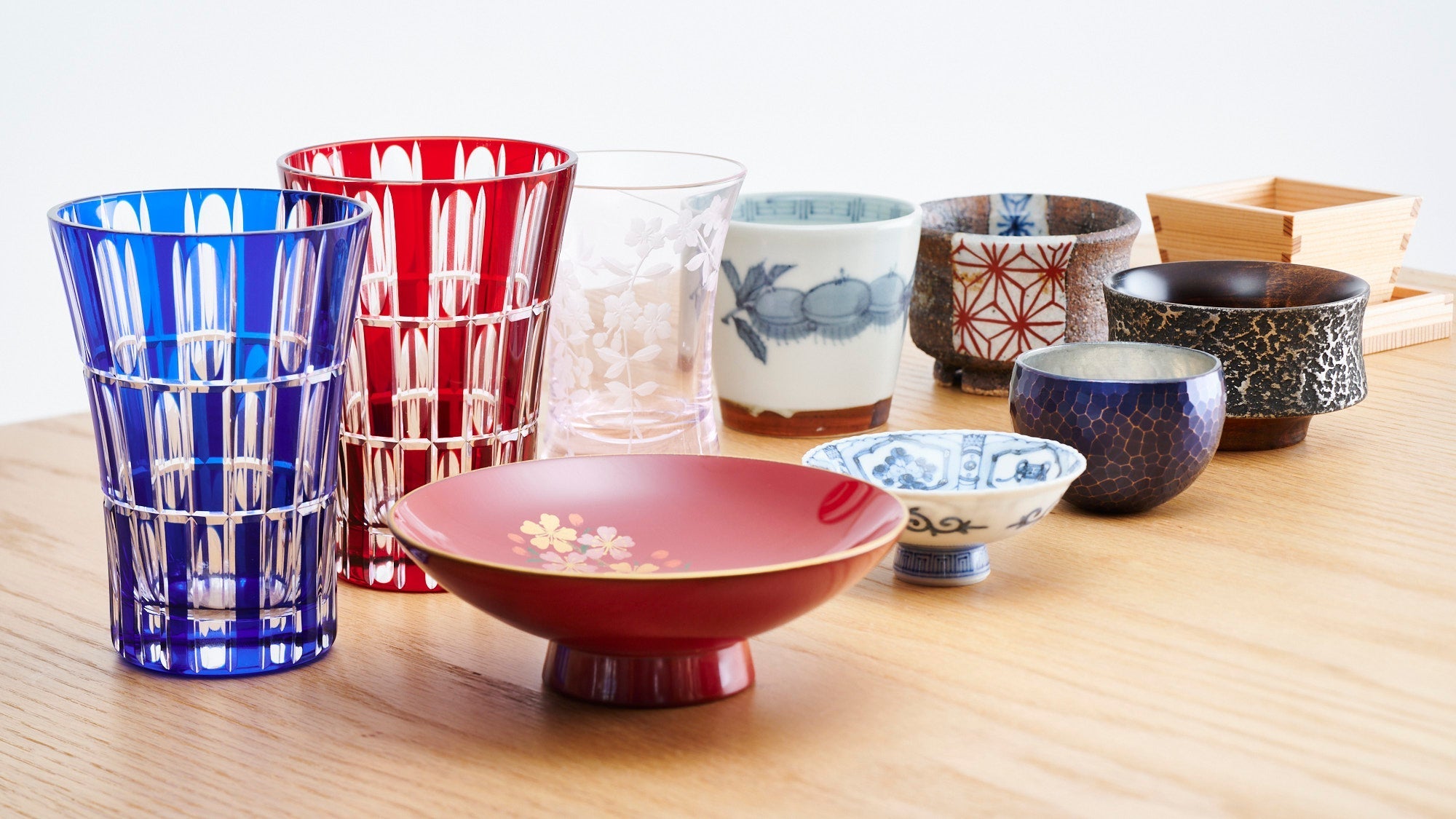
Otsukimi Party under the Autumn Moon
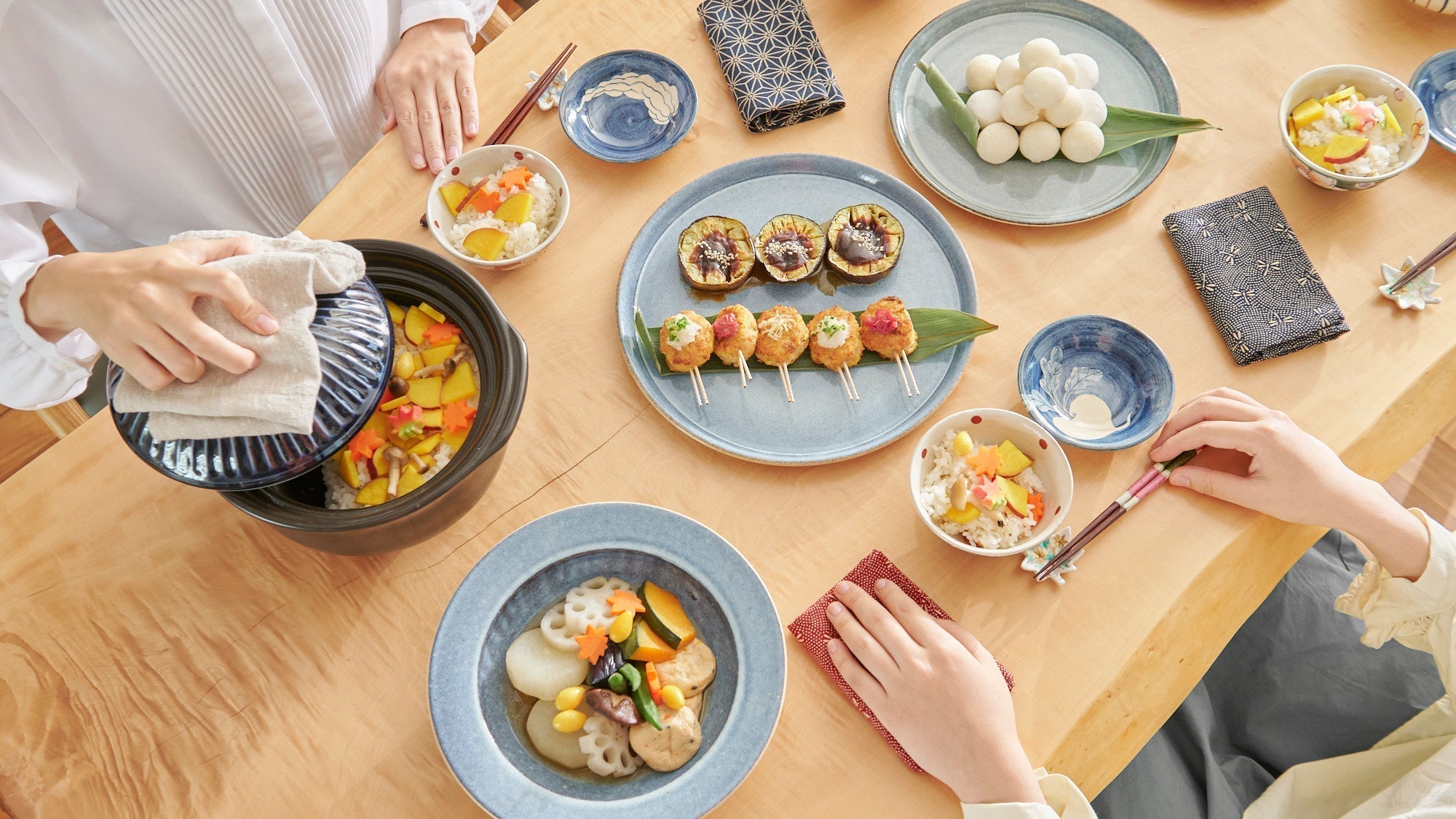
Cool Summer Dining with Tableware from Kyoto
